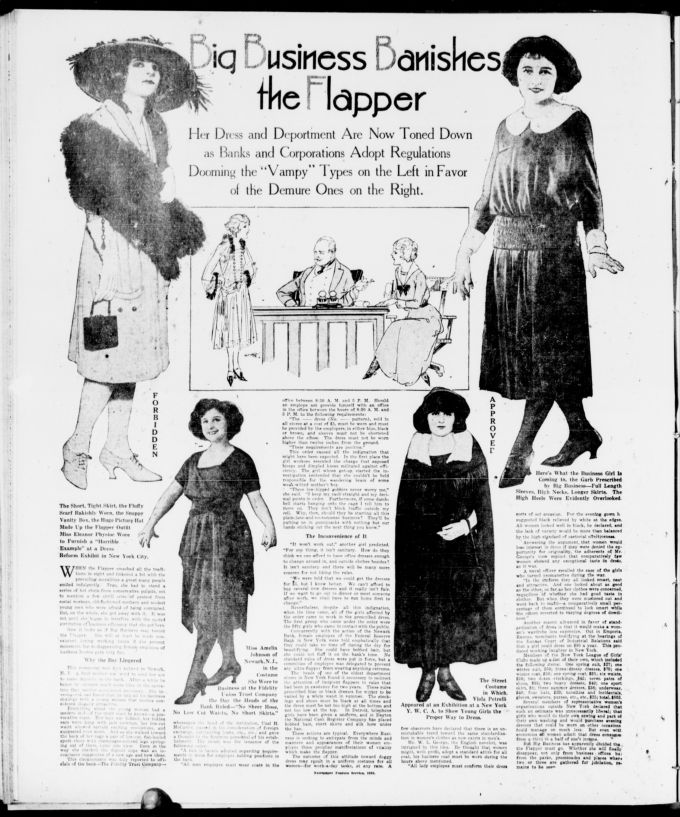“Big Business Banishes the Flapper"

Annotation
The “flapper” craze overtook the western world in the early 1920s and was spearheaded by young women intent on bucking cultural norms of the time. An icon of the Roaring Twenties, flapper culture was aesthetically embodied in short skirts, bobbed hair, and heavier makeup. Flappers were criticized for drinking alcohol and smoking cigarettes in public, their freer attitude toward sexual relations, and the predilection for jazz music. The flapper subculture arose during a period of social and political turbulence, as well as increased cultural exchange across the Atlantic, following the close of World War I.
In reaction to this flapper movement, many businesses in the west, especially in the United States, began to crack down on and regulate the dress and behavior of young female employees. Rules spread pertaining to the length, color, and patterns, of dresses and even which store clothing was bought from. Many conservatives in the west saw flapper girls as hedonistic, flippant, reckless, and unintelligent.
Credits
The Morning Tulsa Daily World, 16 July 1922, Library of Congress, https://chroniclingamerica.loc.gov/lccn/sn85042345/1922-07-16/ed-1/seq-26/